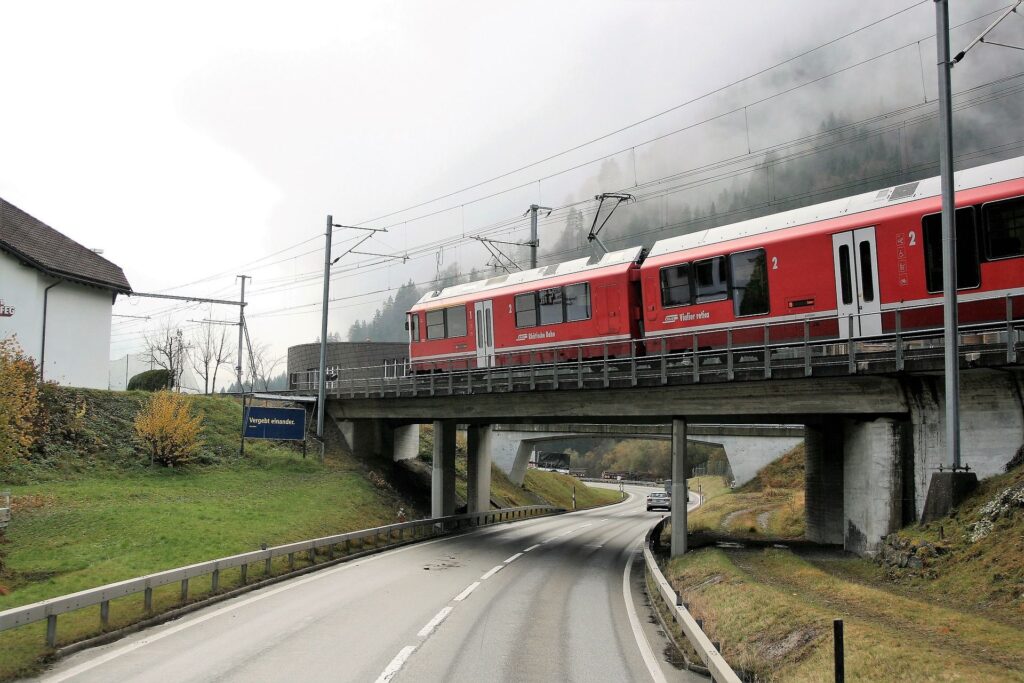“Pandemic as a learning curve for federalism”
An interim report on the approach of the cantons to the COVID19 crisis, carried out by Avenir Suisse, saw Zug, Ticino and Grisons at the top of the list
Which cantons have excelled in addressing the challenges posed by the pandemic? The new Monitoring of the Component States of the Swiss Confederation conducted by Avenir Suisse summarizes the lessons learned from almost two years of living with the Coronavirus.
In order to be better able to face future challenges, we need to organize ourselves more scrupulously and define responsibilities more clearly within the federalist structure of the state.
In an international comparison, the Swiss cantons enjoy a high degree of autonomy thanks to the federal system. The management of the pandemic is no exception (once the “extraordinary situation” has been declared over).
The “new” COVID Act19 passes the Swiss people’s scrutiny

From Lukas Schmid useful lessons for future crisis situations
Avenir Suisse has taken the opportunity to launch a new “Monitoring of the Cantons”. In his in-depth report, author Lukas Schmid analyzes primary data in order to derive useful lessons for future crisis situations, and in particular for managing the impetuous advance of the fifth wave of COVID-19.
Welche Strategien erzielten beim Kampf gegen #Covid19 die grösste Wirkung im Ziel? Die neue Studie von Lukas Schmid zieht eine Zwischenbilanz zum Umgang der Kantone mit der Pandemie: @lukschmid https://t.co/HFchwTYCvu
— Avenir Suisse (@Avenir_Suisse) December 15, 2021
More testing, more control: poorly JU, NE, OW, AG, SG, LU and SZ
In order to control a pandemic there is no alternative but to carry out extensive testing and set up effective contact tracing (CT).
The comparison between the cantons leaves no doubt: the great efforts of some have paid off. Basel-Stadt, Basel-Landschaft, Zug and Graubünden have kept the spread of the infection under control better than others, while Jura, Neuchâtel, Obwalden, Aargau, St. Gallen, Lucerne and Schwyz, with their wait-and-see approach, have had to cope with a sharp increase in cases.
The study also comes to another conclusion: very few cantons were able to establish a decentralized infrastructure for testing. The results are also very poor for repeated in-house swabs, which were only successfully carried out in the canton of Graubünden.
A further aggravating factor was the impossibility of ensuring a flow of information between the cantons due to the different tracking systems. A uniform contact tracing system to be used nationwide is therefore more than necessary.
The Innovative Start Up/SME Award also beats COVID19!

Intensive care units were (almost) at the limit of their capacity
So far, a complete collapse of the healthcare system in Switzerland has been narrowly avoided. However, there were significant differences across cantons in the ability of intensive care units (ICUs) to cope with the crisis.
The impact on other sectors of the health care system also provided a mixed picture.
Shifts (in the form of referrals of planned interventions) were few in Ticino and, despite high utilization of care, also in Lucerne, Geneva, and Vaud.
With the exception of Basel-Stadt, Solothurn, and Graubünden, however, much of Avenir’s data suggests that hospitals performed some sort of “covert triage” during the pandemic peak.
The fact that many cantons were unable to maintain the operational capacity of their intensive care units at the most critical time does not bode well for the further evolution of the pandemic.
Compensation for loss of earnings COVID: extended entitlement

Vaccination campaigns less than optimal, except in TI, ZG and FR
The immunization of the population is the most important factor in the fight against the pandemic.
Already in the period reserved to older groups, where the willingness to be vaccinated can be considered almost taken for granted, the Cantons have shown to proceed at an alternating pace.
The cantons Ticino, Zug and Fribourg were the fastest, while the awareness campaigns in Obwalden and Appenzell Innerrhoden failed to raise the low vaccination rates.
The cantons have marched in step both in their efforts to increase public readiness for immunization and in their duties to provide information.
Across the country, these important aspects have been neglected for too long. The impression of a hesitant approach also remains when it comes to the lame organization of booster doses.
Ordinance on COVID certificates adopted in Switzerland

Each canton in its own way for aid: turnover or restrictions?
With the hardship allowances, the Federal chambers of Parliament have put together a support program for companies affected by the pandemic, leaving it up to the cantons to structure the aid for companies with an annual turnover of less than 5 million, but ensuring 70% financing by the federal government.
Regardless of the fact that non-repayable subsidies proved to be the predominant form, the link between compensation and duration of restrictions (rather than the extent of economic losses actually incurred) raises some doubts in many cantons.
Only Basel-Stadt, Graubünden, Solothurn, Vaud and Valais have calculated compensation on the basis of strictly economic criteria.
Since hardship allowances are intended to remain a crisis instrument for future emergency situations, it is imperative to reconsider the very purpose of the instrument and the division of tasks associated with it.
This is how Switzerland’s COVID certificate will work

Open schools: two tests per week only in Zug and Graubünden
The decision to keep schools open or to close them is a matter for the cantons. After the first wave, teaching continued to take place as normal in most cantons, given the enormous difficulties for the entire school system encountered with distance learning.
The decision to keep schools open was accompanied by rigorous plans, which, however, had very different outcomes depending on the financial and personnel resources deployed.
In the fall of 2021, when cases were very high, Zug and Graubünden were the only cantons to conduct two tests per week.
As long as the pandemic punctuates our lives, distance learning, or a hybrid form of teaching, will remain a reality, at least for students who will have to observe a certain quarantine period.
In Switzerland, the COVID19 certificate is universal and cannot be falsified

Conclusion: Make the cantons responsible, but on three conditions
Federalism has passed the pandemic test, as demonstrated by the pioneering cantons of Graubünden, Ticino and Zug, which boast noteworthy achievements in every area.
However, comparative analysis also reveals that in some cases the challenges have pushed us to the edge of what is feasible. Slippages and omissions have occurred through the fault of the local ruling class or have been the result of institutional shortcomings in the current federal system.
The main lessons we can learn from the pandemic are as follows:
1) Prepare more thoroughly for the crisis: in the area of health and population protection, the cantons did not plan in sufficient detail. Too little importance has been attached to clarifying responsibilities in emergency preparedness. Crisis work should also cover the occurrence of emergencies of an unknown nature.
2) Increased awareness of crisis status and forward-looking interventions: There has at times been a lack of awareness of the need to set up short-term measures to contain the pandemic, e.g. organization of contact tracing in summer 2020, lack of low-threshold tampon supply in autumn 2020, unimaginative efforts to increase vaccination rates in summer 2021 or booster dose in winter 2021/22.
In Switzerland, lulling oneself into false certainty is probably explained by the life experience of past decades, but during the pandemic it proved to be a bad advisor.
3) Reorganize to strengthen federalism and clarify the division of tasks between the federal government and the cantons. The perception of the responsibilities of the cantons is also distorted by the unclear allocation of tasks between the various levels of the state and the responsible Directors’ Conferences.
What is interpreted by the public as “hesitation and wavering” on the part of the cantons is the result of an intermediate level which, from a state policy perspective, should be regarded as critical and which hinders proper decision-making in the individual cantons.
The reflection applies in particular to the Conference of Cantonal Health Directors.
COVID, Switzerland updates regulations on itinerant trade







